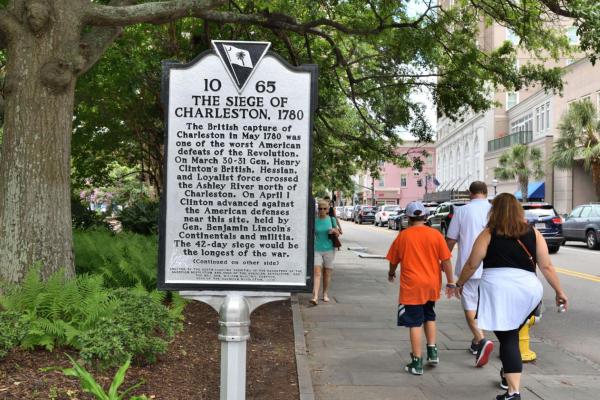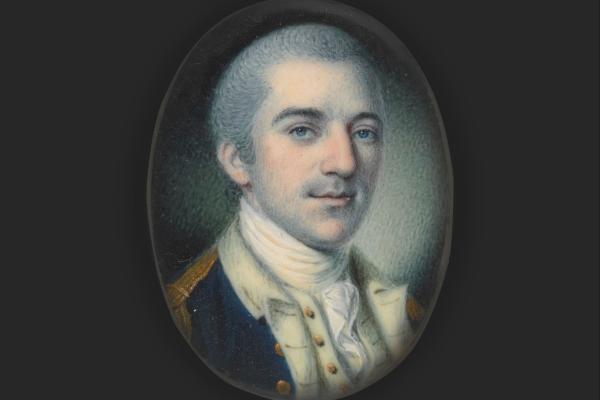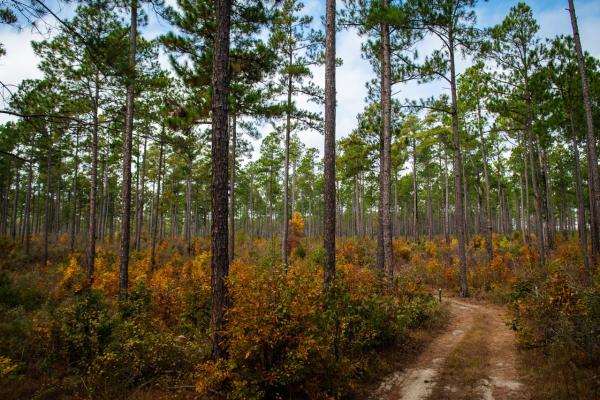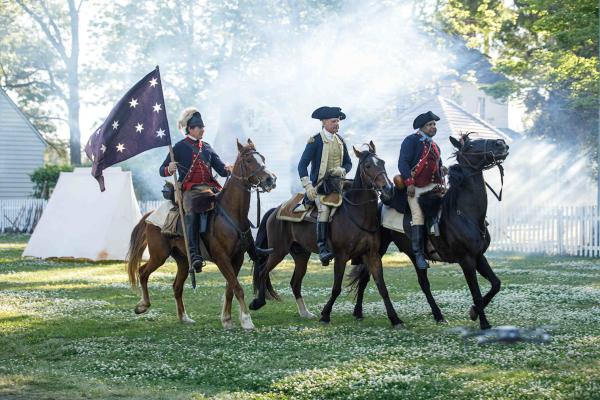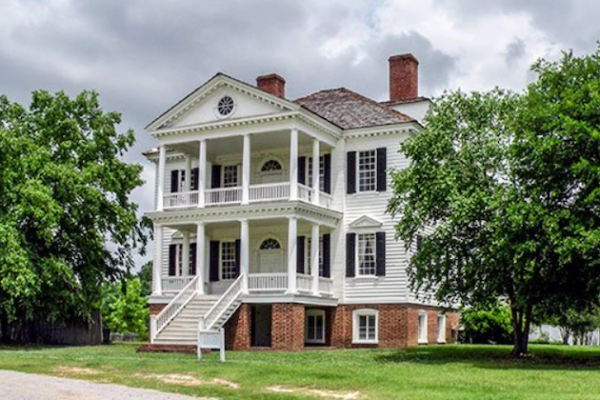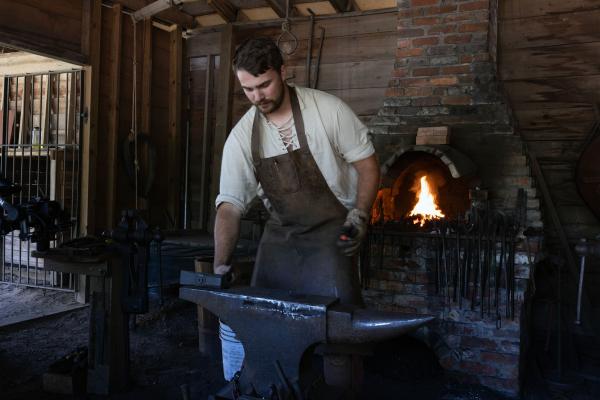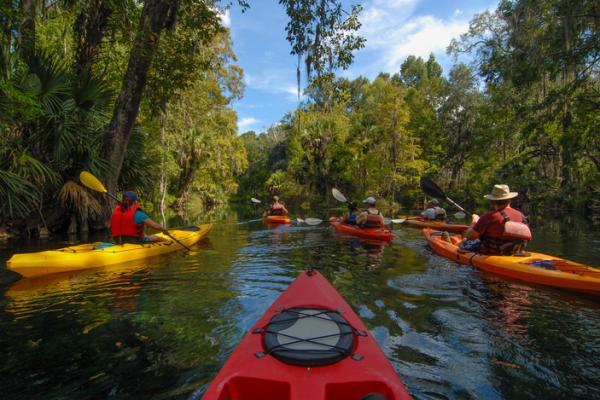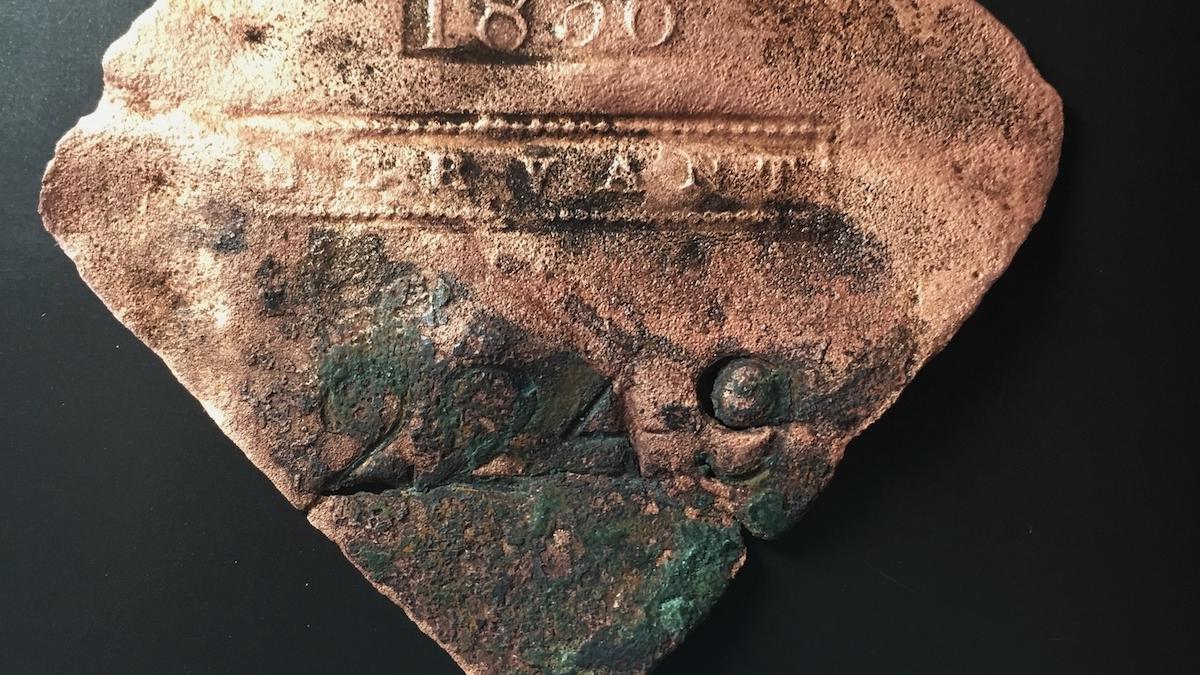
Tar Bluff Artifacts Recall a Voice Silenced by War
If you saw the hit play Hamilton—or even if you didn’t—you may have heard of Revolutionary War hero John Laurens. An aide-de-camp to General George Washington and a close friend of Alexander Hamilton, the young Patriot from South Carolina lost his life at the Battle of Tar Bluff in South Carolina on August 27, 1782. Recent excavations at the battle site turned up the long-buried detritus of warfare—fired lead shot, iron cannister shot, a British carbine bayonet, and a George III half penny from 1775. Archaeologists also found a disturbing but unrelated relic—a slave tag dated 1836.
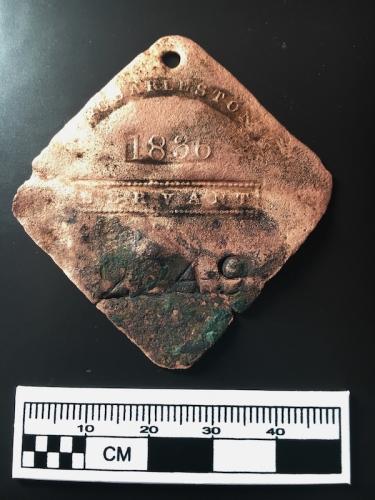
A slave tag from 1836, excavated from the site of the Battle of Tar Bluff.
It bears a registration number and identifies the wearer as “servant.” While it was lost decades after the War for Independence, when a rice mill was located on the property, it draws a poignant parallel to Laurens, who was an outspoken critic of the dehumanizing institution of slavery.
Ironically, the slave trade made John’s father, Henry Laurens, one of the richest men in the American colonies. His South Carolina plantations were farmed by hundreds of enslaved laborers. John grew up among Charleston’s elite, but after his mother died, Henry took him and his siblings abroad to further their education. In Europe, John became fluent in French, proficient in law, and increasingly curious about the discord with Britain brewing back home. He returned to America in 1777 and joined the Continental Army. Laurens’ commitment to liberty soon led him to oppose the hypocrisy of Patriots who fought for freedom but continued to rely on slave labor. As his interest in the abolitionist movement grew, he encouraged enslavers, such as his father and George Washington, to free their enslaved workers, but they resisted.
John Laurens did not give up. He had a novel idea. He argued—to his father, to his commanding officers, to anyone who would listen—that the Continental Army should boost its ranks with Black battalions by paying enslavers for each person who enlisted and then emancipating those who served after the war. This would be a step toward dismantling slavery. He wrote to his father from Valley Forge on February 2, 1778: “I hope that my plan for serving my Country and the oppressed Negro-race will not appear to you the Chimara of a young mind deceived by a false appearance of moral beauty—but a laudable sacrifice of private Interest to Justice and the Public good.” While not outwardly embracing his son’s ardent views, Henry listened.
Sadly, Lauren’s activist voice was silenced at the age of twenty-seven when General Mordechai Gist dispatched him, along with 40 men and a howitzer gun, to launch a surprise attack at Tar Bluff. On the morning of August 27, the British ambushed Lauren’s unit, captured the howitzer, and killed Laurens in a minor skirmish on the shores of the Combahee River. Using a map drawn by a British officer and LIDAR (Light Detection and Ranging) technology to probe dense forest in the area today, researchers now know where this fatal encounter occurred. It is where they found the slave tag of 1836 and—in a further twist of fate— close to the site of a daring military operation that took place 80 years later. On June 2, 1863, Harriet Tubman helped 150 African American Union soldiers rescue more than 700 slaves in the Combahee Ferry Raid during the Civil War. Laurens would have applauded their heroism.
--Amy Pastan for The Liberty Trail
Uncovering History
We invite you to visit the preserved locations along the Liberty Trail and to immerse
yourself in the extraordinary events that determined the fate of a nation.
